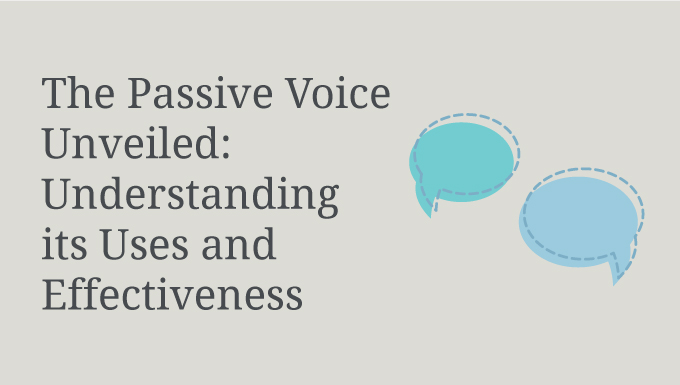The passive voice, often misunderstood and occasionally criticized, plays an important role in the English language. While active voice is commonly preferred for its directness and clarity, the passive-voice offers unique advantages in certain situations. In this blog post, we will explore the uses of the passive voice, debunk common misconceptions, and shed light on how this grammatical construction can enhance our writing and communication.

Table of Contents
Clarifying the Passive Voice
To embark on our journey into the realm of passive voice, let’s start by unraveling the very essence of what it entails. We shall meticulously dissect its intricate structure and discern the subtle disparities that set it apart from the active-voice. By grasping the inner workings and mechanics of the passive-voice, we will lay a sturdy foundation upon which we can embark on a more profound and multifaceted exploration of its myriad applications and implications.
Shifting the Focus
One of the primary uses of the passive-voice is to shift the focus of a sentence from the doer of the action (subject) to the receiver of the action (object). This section will examine scenarios where emphasizing the object or the action itself is more effective or appropriate, such as when discussing scientific research, historical events, or bureaucratic processes.
Emphasizing Objectivity and Impersonality
The passive voice possesses a unique ability to infuse our writing with a sense of objectivity and impersonality. In the forthcoming discussion, we shall delve into the advantages of harnessing this linguistic tool, particularly in the domains of academia, science, and technology, where an impartial and dispassionate tone often reigns supreme. Furthermore, we will delve into how the passive-voice serves as a potent instrument for mitigating bias and upholding a professional and authoritative demeanor in our discourse.
Maintaining Politeness and Tact
There are circumstances where the passive voice serves as a valuable tool for imparting information with a degree of politeness and tactfulness. In the forthcoming discussion, we will embark on an exploration of how the passive-voice can be wielded adeptly to temper criticism, sidestep direct blame or accusations against individuals, and delicately traverse topics that require a gentle and diplomatic touch.
Highlighting Unknown or Irrelevant Actors
There are instances when the doer of the action is unknown or irrelevant. The passive voice can be employed to maintain focus on the action itself without delving into specifics. We will discuss how the passive-voice can be useful in news reporting, storytelling, and general statements where the emphasis lies on the action rather than the actor.
Avoiding Repetition and Variating Sentence Structure
The passive voice presents us with a distinct stylistic advantage, affording the opportunity to diversify our sentence structures and steer clear of redundant repetition. In this section, we will illustrate how the strategic employment of the passive-voice can enrich the cadence and readability of our writing, guarding against monotony while infusing our prose with compelling stylistic variation.
Recognizing the Appropriate Context
The passive voice presents us with a distinct stylistic advantage, affording the opportunity to diversify our sentence structures and steer clear of redundant repetition. In this section, we will illustrate how the strategic employment of the passive-voice can enrich the cadence and readability of our writing, guarding against monotony while infusing our prose with compelling stylistic variation.
Conclusion
The passive voice, often underappreciated and sometimes maligned, possesses distinct advantages in specific contexts. By understanding its uses and effectiveness, we can harness the power of the passive voice to enhance our writing and communication skills. Embracing this grammatical construction allows us to shift focus, maintain objectivity, express politeness, highlight unknown actors, and add variety to our writing. Let us explore the realm of the passive-voice , unlocking its potential and embracing it as a valuable tool in our linguistic arsenal.